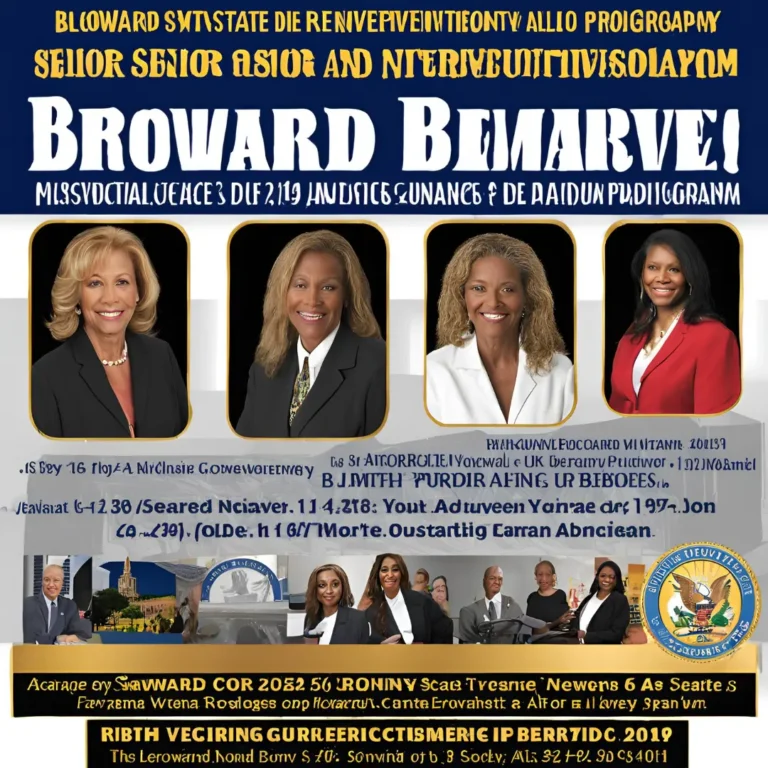Did Helen Keller Fly a Plane? Helen Keller Flying Facts
Have you ever imagined soaring high above the clouds without being able to see or hear? Well, Helen Keller, a name synonymous with overcoming impossible odds, reportedly had such an experience. This remarkable woman, known worldwide for her triumphs over being deaf and blind, has a story that might include an episode as thrilling as flying an airplane. In this article, we delve into Helen Keller’s alleged aerial adventure and explore how a person who lived in darkness and silence possibly experienced the vast, echoing skies.
Helen Keller is not just a historical figure; she is an emblem of courage and resilience for disabled people everywhere. Her achievements stretch far beyond what many would expect from someone with her disabilities, making her life a continuous source of inspiration. Now, let’s explore an intriguing aspect of her legend—did Helen Keller fly a plane?

Helen Keller’s Background
Born in 1880 in Tuscumbia, Alabama, Helen Keller was struck by an illness at the age of 19 months that left her both deaf and blind. Her world was plunged into silence and darkness at a very young age, but this was just the beginning of a story that would inspire millions. The challenges of interacting with the world could have isolated her completely, but the arrival of a teacher named Anne Sullivan when Helen was six years old changed everything.
Anne Sullivan, often hailed as a miracle worker, introduced Helen to a world of words through the innovative use of hand signals and tactile learning methods. Sullivan’s dedication and ingenious teaching methods opened the doors of communication for Helen, setting her on a path to significant personal achievements. This partnership was one of the most iconic teacher-student relationships in history, demonstrating the power of education and empathy.
Helen’s academic journey didn’t stop at learning to communicate. She attended the Perkins School for the Blind where she honed her abilities and later moved on to Radcliffe College, becoming the first deaf-blind person to earn a Bachelor of Arts degree. Her time at college was marked by an insatiable hunger for knowledge and an unwavering determination to succeed against all odds.
Transitioning from a student to an activist and author, Helen Keller used her experiences and voice to advocate for others with disabilities. Her writings and lectures, filled with insights from her unique perspective, made her a celebrated public figure and a respected advocate for disability rights, women’s suffrage, and social justice. Helen Keller’s life was a series of battles and victories, a testament to her extraordinary resilience and the transformative power of education and advocacy.
In the next sections, we will explore the fascinating tale of Helen Keller’s flight—an experience that, if true, symbolizes the limitless possibilities that can arise from the human spirit’s refusal to be grounded by physical limitations.
PS: While exploring the intriguing question of ‘Did Helen Keller fly a plane?’, you might also enjoy discovering how Ezclasswork is transforming education with its engaging and innovative approach
Aviation in Helen Keller’s Time
When Helen Keller was navigating a world enveloped in silence and darkness, the skies above were buzzing with the nascent sounds of aviation. The era she lived through was one of rapid technological advancements in flight, a realm just as uncharted and thrilling as the one she traversed on the ground. The story of aviation during Helen Keller’s lifetime is not just about the machines that took to the skies but also about the burgeoning possibilities they represented for people from all walks of life, including those with disabilities.
The Wright Brothers, Orville, and Wilbur, made their historic first flight in 1903 when Helen was 23 years old. This momentous event marked the beginning of the aviation age and symbolized a new frontier of human achievement. The aircraft they piloted, a fragile contraption of wood and fabric, was a far cry from today’s sophisticated jets but it represented the incredible potential of human ingenuity—a theme resonant with Helen’s own life.
As aviation technology evolved rapidly through the early 20th century, so did the aircraft. By the 1940s, the introduction of the C-54 Skymaster, a four-engine transport aircraft used extensively during World War II, epitomized the advancements in aeronautics. This aircraft was significant not only for its role in the war but also for its capacity to connect distant parts of the world, making the globe a smaller, more accessible place for many, albeit still out of reach for others.
Despite these technological leaps, the accessibility of aviation for disabled individuals during this era was minimal. The early 20th century was a time when disabilities were not widely accommodated, particularly in complex environments like aviation. However, stories of individuals with disabilities who engaged with aviation in some form do exist, though they were exceptions rather than the rule. These narratives are crucial as they highlight the gradual shift towards inclusivity and the breaking of barriers—themes that align closely with Helen Keller’s advocacy for the rights and capabilities of disabled people.
The question of whether Helen Keller herself experienced flight directly intersects with these themes. If she did indeed fly, it would not only have been a remarkable personal achievement but also a symbol of breaking through the literal and metaphorical barriers that defined her world. Such an event would underscore the spirit of an era that, while still restrictive in many ways, was beginning to imagine the impossible as possible.
In examining Helen Keller’s connection to aviation, we not only reflect on her incredible story but also on the broader context of the time—a period of exploration and transformation both in the skies and on the ground. Helen Keller’s life and the era of early aviation together tell a story of overcoming limitations and reaching for the stars, a narrative that continues to inspire and challenge our perceptions of what is achievable.
The Story of Helen Keller and Aviation
Amidst Helen Keller’s extensive list of accomplishments, one story that captivates and stirs the imagination is the tale of her “first flight.” While not as documented as her academic and advocacy achievements, this story, if true, provides a profound illustration of Keller’s relentless pursuit of experiences beyond the usual scope for someone with her disabilities.
The story goes that Helen Keller once took a flight over the Mediterranean Sea, an experience that would have been awe-inspiring for anyone, let alone someone who experienced the world through touch and sound alone. The aircraft possibly used for this adventure was the C-54 Skymaster, a significant model of its time known for its role in transatlantic travel. This plane, with its powerful engines and considerable size, would have offered a unique sensory environment for Keller.
Imagining Helen aboard the aircraft, one can only speculate about how she perceived this remarkable experience. Known for her acute sensitivity to vibrations and air movements, Keller likely “felt” the flight through the hum and vibrations of the engines and the air currents that raced across the skin of the plane. Each shift in altitude and speed, while invisible and silent to her, would have been palpable through the delicate movements and pressures she sensed through her hands and body.
The role of the Helen Keller plane crew and her flight instructor, potentially a man named Norman Chapman, would have been crucial in guiding Helen through this experience. They would have assisted in translating the essence of flight into a language of touch and motion that she could understand. Norman, if he indeed was part of this journey, might have used tactical sign language or other adapted methods to communicate what was happening as they flew, ensuring Helen was not just a passenger but an engaged participant in the experience.
This flight, symbolically and practically, represented more than just an airplane journey; it was a testament to human courage and the desire to transcend conventional boundaries. For Helen Keller, who lived her life in what she described as a “misty, dim world,” the flight would have been another step in her ongoing journey to connect with the world in every way possible.
Helen Keller’s aviation experience embodies the spirit of an era and a person unbounded by the constraints of the physical world. It serves as a reminder that the sky, quite literally, is not the limit, even when faced with the most formidable challenges. The narrative of Helen Keller in Plane is a celebration of possibility, a poignant chapter in the incredible story of a woman who spent her life demonstrating that with imagination and support, anything is achievable.
Helen Keller’s Impact on Perceptions of Disability
Helen Keller’s life was a tapestry of bold adventures and staunch advocacy, each thread woven with her indomitable spirit to redefine the perceived limitations of the disabled. Among these adventures, the alleged flight stands out as a symbol of breaking barriers, not just in the air but in societal attitudes towards disability. This particular tale (Did Helen Keller Fly a Plane), whether fully verified or not, challenges the conventional views on what individuals with disabilities can achieve and has served as a beacon of possibility for many.
Beyond her possible ventures into aviation, Keller’s role as a tireless advocate brought substantial changes to how society viewed and treated disabled individuals. Her work encompassed fighting for their rights, improving education for the blind and deaf, and advocating for better employment opportunities. By sharing her experiences and the strategies she developed to navigate her challenges, Keller provided a blueprint for empowerment and inclusion.
Legacy and Continuing Influence
Helen Keller’s legacy is as enduring as it is profound. Her impact on institutions like the American Foundation for the Blind is monumental. She helped to elevate the standards of care and education for the blind, pushing for innovations that have improved the lives of countless individuals. Her advocacy work helped to establish structures that continue to support the blind and deaf communities today.
Keller’s life and works have been immortalized in numerous books, films, and other cultural references, which keep her story alive in the public imagination. Her autobiography and other writings have been adapted into films like “The Miracle Worker,” which not only depict her life’s challenges and triumphs but also highlight lesser-known aspects of her story, such as her alleged flying experience. These adaptations have played a crucial role in shaping public perception and understanding of disabilities.
The inspiration drawn from Keller’s life extends far beyond the deaf-blind community. Her story resonates with anyone facing challenges, serving as a powerful reminder of the human potential to overcome adversity. Educators, activists, and leaders in various fields cite Keller as an influence in pursuing inclusive practices and policies. Her life encourages ongoing dialogue and action towards a more inclusive society where everyone, regardless of their abilities, can have the opportunity to lead rich and fulfilling lives.
Helen Keller’s narrative continues to teach and inspire, proving that the limitations placed on us by society or by our circumstances are often just starting points for extraordinary journeys. Her adventures, her advocacy, and her achievements are testaments to the idea that life’s potential is not dictated by what one can physically see or hear but by the vision one holds and the determination to realize it.
FAQs
Conclusion
The tale of Hellen Keller’s interaction with aviation, whether fully substantiated or not, encapsulates the essence of her life’s narrative—one of pushing boundaries and challenging the status quo. The story of her possible flight over the Mediterranean Sea in a C-54 Skymaster serves as a powerful metaphor for her approach to life: soaring beyond the visible and audible limits imposed by her disabilities. This account, while not as documented as her educational and advocacy achievements, adds a fascinating layer to her legend, suggesting that her experiences and explorations were as boundless as her spirit.
Helen Keller’s legacy is a beacon of resilience and possibility. She transformed her personal challenges into a platform for change, advocating for the rights and recognition of disabled people worldwide. Her life’s work and the stories that sprang from it continue to inspire and educate. By demonstrating that the human spirit can transcend any barrier, Keller’s legacy encourages us all to rethink the perceived limitations of individuals with disabilities and to strive for a world that values all contributions, regardless of physical constraints.
As we reflect on Helen Keller’s life and the symbols of freedom and exploration that her alleged flight represents, it’s clear that her impact goes far beyond her time. She remains a timeless symbol of overcoming incredible obstacles, teaching us that with determination, support, and courage, new heights are always within reach.





